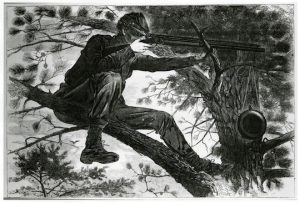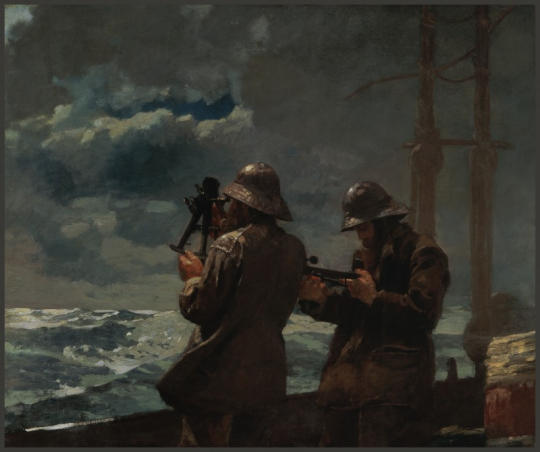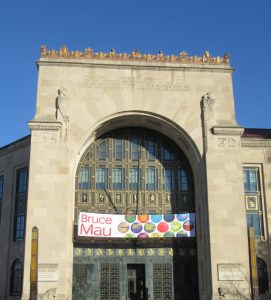While painting and photography are different arts, they can and do overlap at times. Paintings can look like photographs and photos can be processed to look like paintings. And classic paintings by the old masters are often used to teach photographers, as well as new painters, how to compose an image and even how to light a scene.
There are also times when painters will use a photograph to help complete a painting when they get back to their studio. And then there are painters who use photos to help develop their own art.
Consider some of the work of Winslow Homer now on display at the Brandywine River Museum of Art in Winslow Homer: Photography and the Art of Painting.
Homer began his artistic career as an illustrator in the 1800s and one of his illustrations — that of the inauguration of Abraham Lincoln — is hanging next to a photograph of the inauguration, a photo taken by noted Civil War photographer Alexander Gardner. Another side by side imagery shows two portraits of Lincoln, one being a drawing by Homer and another being a Matthew Brady photograph. Both of Homer’s illustrations were for Harper’s Weekly.

But as Christine Podmaniczky, a curator at the museum noted, the technology of the times that Homer included went beyond photography. He was not a photographer himself and he didn’t own a camera until the 1880s. But he included other types of viewing technology —telescopes and sextants — within his paintings and drawings.
His painting Eight Bells (see featured image) is an example of that point. The image shows two sailors at sea, one using a sextant and the other looking down at what might be a chart. Podmaniczky raised the possibility of the sailor looking at the chart might represent Homer the artist while the one using the sextant being Homer the observer who uses technology to get the observation accurate.
She also noted that the Civil War photography of Garner and Brady brought about “a new way of thinking about war [about how it’s portrayed]. It’s no longer the heroic general on a horse, but bodies.”
That new way of looking was also about the individual soldier and his life in uniform and in combat. Homer captured that concept with his The Army of the Potomac — Sharpshooter on Picket Duty, Skirmish in the Wilderness and Trooper Meditating Beside a Grave.
Podmaniczky was insistent that some of her comments come directly from Frank Goodyear and Dana Byrd, the actual curators of the exhibit from Bowdoin College in Maine. The exhibit is on loan to the BRM.
“It’s all about ‘getting it right,’” for Homer, she explained. “I’m fascinated that he was such an observer of nature. He spent hours and hours just observing. He was all about getting it right through observation.”
But Homer was also a businessman who realized a drawing or a painting could only be sold once, Podmaniczky said. So, during the last 30 years of his life, he had lithographs and photos made of his work so he could sell more copies of the same image.
But there were creative reasons as well, reasons that point to the idea of him getting things right through observation. According to press notes: “His use of various media came from his interest in probing the way things look and the challenge of portraying them realistically. Homer borrowed certain elements — the cropping, the blur of the background and the flatness of the composition — from photographic convention, yet his painting, based on unique optical experience, as an artistic creation reflective of myriad decisions. To Homer, paintings had the potential to make a subject more clearly understood; photography added to that conversation about how to portray the world around him.”
Winslow Homer: Photography and the Art of Painting, on loan from the Bowdoin College Museum of Art, runs through Feb. 17.
About Rich Schwartzman
Rich Schwartzman has been reporting on events in the greater Chadds Ford area since September 2001 when he became the founding editor of The Chadds Ford Post. In April 2009 he became managing editor of ChaddsFordLive. He is also an award-winning photographer.


 (5 votes, average: 4.80 out of 5)
(5 votes, average: 4.80 out of 5)
Comments